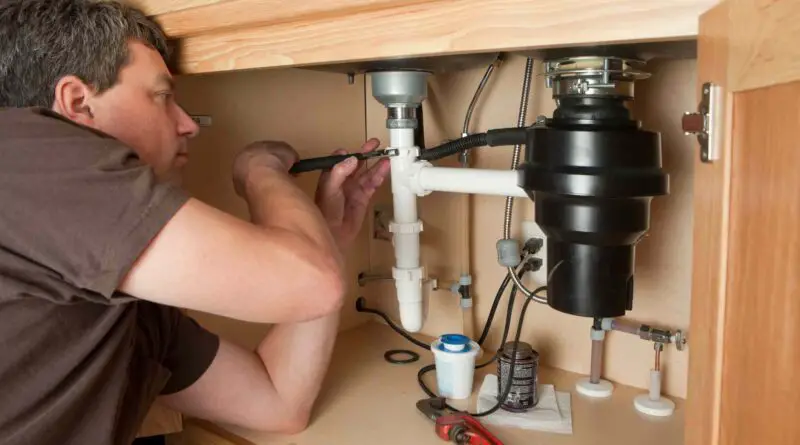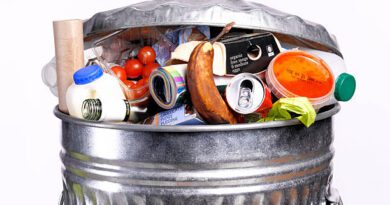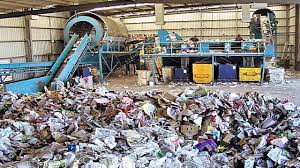A Complete Guide to Garbage Disposal Installation
Garbage Disposal Installation is about putting a special machine in your kitchen sink to help get rid of food scraps and other waste. It’s like having a mini-trash can right in your sink!
When you get a garbage disposal installed, a plumber comes to your house and does all the work. They have to hook up the garbage disposal to your sink and connect it to your plumbing system. It’s not an easy job, but plumbers are trained to do it safely and correctly.
The garbage disposal itself is a small machine that sits under your sink. It has sharp blades inside that spin around really fast to chop up food scraps into tiny pieces. Then, the little pieces of food get washed away down the drain with water.
Getting a garbage disposal installed can be really convenient. Instead of having to scrape food scraps into the trash, you can just rinse them down the sink. It’s a great way to cut down on kitchen mess and make cleanup easier.
But there are some things to keep in mind when you have a garbage disposal. You can’t put just anything down there! Things like bones, fruit pits, and big chunks of food can damage the blades and cause the garbage disposal to break. So, it’s important to be careful about what you put down the sink.
It’s also important to keep your garbage disposal clean. Food particles can get stuck inside and start to smell if you don’t clean it regularly. Luckily, there are special cleaners you can use to keep your garbage disposal fresh and clean.
Overall, garbage disposal installation is a great way to make kitchen cleanup easier and more convenient. With the help of a plumber, you can have a garbage disposal installed in no time and enjoy the benefits of having a cleaner, tidier kitchen.
If you’re considering installing a garbage disposal in your kitchen or need to troubleshoot an existing one, this article provides a complete guide to garbage disposal installation.
Read Also: Water and Waste-water Purification Process
The Basics Of Garbage Disposal Installation

Before diving into the specific issues related to garbage disposal, let’s start with the basics of installation. If you don’t already have a garbage disposal unit installed, you can follow these steps to get one up and running in your kitchen.
1. Choose the Right Disposal: Begin by selecting the appropriate garbage disposal unit for your needs. There are different sizes and power ratings available, so make sure to choose one that suits your kitchen’s demands.
2. Gather the Necessary Tools: To install a garbage disposal, you’ll need a few essential tools such as a wrench, screwdriver, pliers, and a hammer. It’s also crucial to have safety gear, like gloves and safety glasses, to protect yourself during the installation.
3. Turn Off Power and Water: Safety should be your top priority. Before you start working on your garbage disposal, turn off the power at the circuit breaker and shut off the water supply under the sink.
4. Remove the Old Unit (if applicable): If you are replacing an existing garbage disposal, start by disconnecting and removing the old unit. This may involve loosening the mounting ring and disconnecting the electrical and plumbing connections.
5. Install the Mounting Assembly: Begin by attaching the mounting assembly to the sink. This typically involves connecting the flange and mounting the ring. Make sure everything is secure and level.
6. Attach the Disposal Unit: Carefully connect the garbage disposal unit to the mounting assembly, aligning it properly. Tighten the mounting screws to secure the disposal in place.
7. Connect Plumbing: Reconnect the drainpipes, ensuring they are tightly secured. You might need to adjust or replace parts to ensure a proper fit.
8. Electrical Wiring: Connect the electrical wires to the disposal unit according to the manufacturer’s instructions. This typically involves connecting the black and white wires from the disposal to the corresponding wires from your electrical supply.
9. Test the Unit: Turn the power back on and run some water through the disposal to ensure there are no leaks and that it operates smoothly. Check for any unusual noises or vibrations.
10. Final Adjustments: Make any necessary adjustments to the mounting and plumbing to ensure a proper fit and smooth operation.
With these basic installation steps covered, let’s move on to the secondary keywords you may encounter once your garbage disposal is up and running.
How to Unclog Garbage Disposal

A clogged garbage disposal can be a frustrating issue in the kitchen. It can result from various causes, including food particles, grease buildup, or foreign objects getting lodged in the disposal. Here’s how to address this common problem:
1. Turn Off Power: Before attempting to unclog the garbage disposal, ensure that the power is off to prevent any accidents.
2. Use a Flashlight: To identify the cause of the clog, shine a flashlight into the disposal to see if you can spot any foreign objects.
3. Remove Loose Objects: If you see any visible debris, use a pair of pliers or tongs to carefully remove them. Be cautious not to damage the disposal blades.
4. Try the Reset Button: Some garbage disposals have a reset button at the bottom. Press it to reset the unit and see if it resolves the issue.
5. Use an Allen Wrench: Many disposals come with an Allen wrench. Insert it into the bottom of the disposal and manually turn it in both directions to free up the motor. This can help dislodge clogs caused by food particles.
6. Use Ice and Rock Salt: Drop a few ice cubes and a handful of rock salt into the disposal and run it. This can help dislodge grease and debris that may be causing the clog.
7. Check the Drainpipe: If the clog is further down the drainpipe, you may need to disconnect and clear the pipe.
8. Seek Professional Help: If you’re unable to resolve the clog, or if the problem persists, it may be time to consult a professional plumber.
Read Also: The Ultimate Guide to Choosing the Right Garbage Disposal Method
How to Fix Garbage Disposal

Garbage disposals can encounter various issues over time, which might require some troubleshooting and repair. Here are common problems and how to address them:
1. Garbage Disposal Not Turning On: If your disposal is unresponsive, check if it’s properly plugged in and if the circuit breaker hasn’t tripped. If these are not the issues, it might be a problem with the disposal’s motor or wiring, and you should consult a professional for repair.
2. Strange Noises: Unusual noises like grinding, clicking, or humming can indicate foreign objects or debris caught in the disposal. Follow the steps outlined in “How to Unclog Garbage Disposal” to address this issue.
3. Leaking Garbage Disposal: If you notice water leaking from your disposal, inspect the connections and plumbing under the sink. Tighten loose connections and replace any damaged components.
4. Stuck Blades: If the blades are not moving freely, use an Allen wrench to manually turn them and free any obstructions. Be cautious and ensure the power is off while doing this.
5. Slow Draining: A slow-draining disposal can be caused by clogs further down the drainpipe. Remove the pipe and clear any blockages.
6. Foul Odors: To combat unpleasant odors, run a mixture of ice and citrus peels through the disposal. This will help clean the blades and leave a fresh scent.
Garbage Disposal Replacement

If your garbage disposal is beyond repair or simply outdated, you may need to consider replacement. Follow these steps to replace your disposal unit:
1. Turn Off Power and Water: As with the installation process, ensure the power is off and the water supply is shut off before you start.
2. Remove Old Disposal: Disconnect and remove the old unit following the steps outlined in the installation basics.
3. Select a New Unit: Choose a new garbage disposal that matches your kitchen’s needs and fits your budget.
I4. Install the New Unit: Follow the installation basics discussed earlier to install the new disposal unit.
5. Test for Proper Operation: Turn the power back on and run water through the new disposal to ensure it’s functioning correctly.
Remember, if you’re not comfortable with the installation or replacement process, it’s best to seek the help of a professional plumber to ensure a safe and effective installation.
In conclusion, a garbage disposal can be a valuable addition to your kitchen, but it requires proper installation, care, and maintenance. Regular maintenance and addressing common issues like clogs and strange noises will help keep your disposal running smoothly.
If it’s time for a replacement, selecting the right unit and following the installation steps can make the process relatively painless
Read Also: Appearance, Features and Farming Guide of Pangasius Fish



